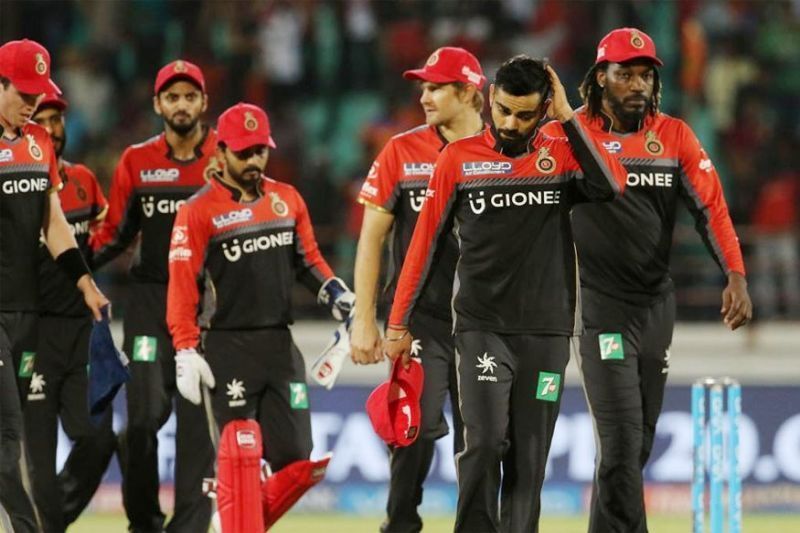
Why India should be worried about RCB's form
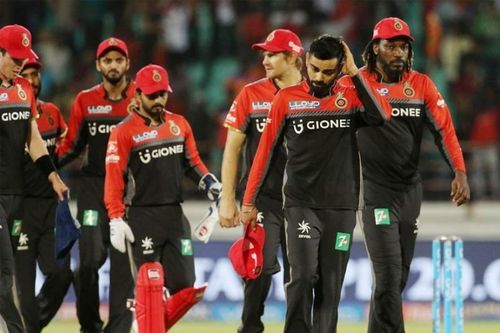
The 12th edition of the Indian Premier League is well and truly underway- and unless you've been living under a rock, you would know that Royal Challengers Bangalore are having a nightmarish tournament. Having lost all five of their league games thus far, the boys from the Silicon Valley of India have been left with almost no chance of making the playoffs this year.
RCB and their struggles
RCB are often the victims of some pretty ruthless internet trolls (and batsmen, to put it bluntly). Much has been made of their struggles-especially in the bowling department, and a heavy dependence on their batting unit that has not clicked at all in this edition of India's premier limited-overs competition. Captain Virat Kohli, RCB stalwart AB de Villiers, exciting West Indian Shimron Hetmyer and experienced Kiwi Colin de Grandhomme have all flattered to deceive, leaving the Challengers with an uphill climb so steep, it might even be vertical.
But there's another factor- the World Cup, starting in June. Selectors from multiple nations have stated that IPL performances will not be taken into account while picking the squad for the World Cup, but it can often be hard to ignore someone who puts in consistent performances in a tournament of this standing, so close to the showpiece of this year's cricketing calendar.
And that is precisely the reason why India needs to be more worried about RCB's-but more particularly-about Kohli's form. Using data from the last 11 seasons of the IPL, a detailed statistical analysis outlines how exactly Kohli's IPL form ties in to his subsequent form in One Day Internationals.
The Trend
On a year to year basis, if we compare the fluctuation in Kohli's batting averages in the IPL to the fluctuation in his ODI batting average for the period between the two successive tournaments, a trend begins to emerge. This trend is perhaps best illustrated by analysing Kohli in the period from the beginning of the 2011 IPL to the end of the 2015 IPL.
From the 2010 IPL to the 2011 IPL, Kohli's batting average went up by 24.49 runs per innings, and his ODI average between the two tournaments saw an improvement as well, from 39.53 to 60.59, an increase of 21.05 runs per innnings. This gave him a fluctuation coefficient of 0.86 for the year.
Similarly, in the years between the 2011 IPL and the 2012 IPL, and so on and so forth until the 2015 season, we see his yearly fluctuation coefficients sit at the values 0.9, 0.96, 0.75, and 0.24. Now, what do these fluctuation coefficients mean?
Fluctuation Coefficients: A Brief Explanation
Fluctuation coefficient might seem like a frightening term to the less mathematically inclined, but in essence, it is simply a measure of how much a batsman's IPL is related to his performance in ODIs thereafter. It is obtained by dividing the batsman's change in ODI average from the previous year by the change in his IPL average from the previous year. There are essentially two facets to interpreting the fluctuation coefficient:
- Whether it is positive or negative
- The actual numerical value
If the fluctuation coefficient is positive, we can say that the batsman's ODI performance was directly proportional to his IPL performance, that is, if he did better in the IPL, he did better in ODIs, and if he did worse in the IPL, he did worse in ODIs. If it is negative, then it means his ODI performance was inversely proportional to his IPL performance, that is, if he did better in the IPL, he did worse in ODIs, and if he did worse in the IPL, he did better in ODIs.
The second important point is the numerical value of the coefficient, which essentially provides us with information of the dependence of the ODI average on the IPL average. The higher the absolute value, higher is the effect of the change in IPL average on the change in ODI average. Put more simply, if a value is very highly positive or very highly negative, it means that the change in IPL average has had a very drastic effect on the ODI average. The closer the value is to zero, the less effect it has had.
Case Studies: Kohli and Raina
Given below is the fluctuation coefficient chart, year on year for Kohli.
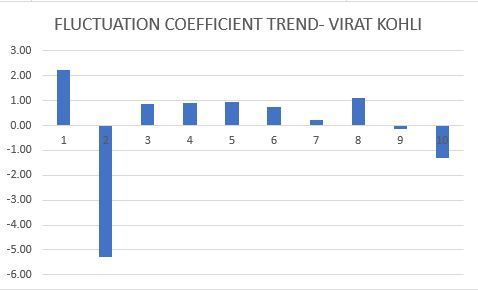
It is clear from the chart that more often than not, Kohli's fluctuation coefficient is positive, which tells us that his IPL form is more than likely to dictate his subsequent ODI form, which includes the World Cup.
Now, it may seem to be a foregone conclusion to some that IPL form dictates batsman's form in international cricket, as he is likely to carry that form and confidence into his next few games. But, that is not necessarily the case.
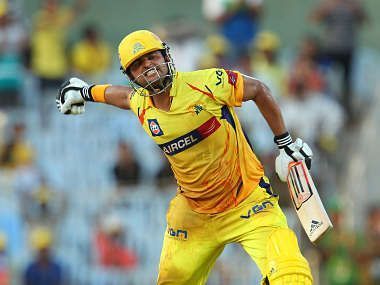
Take, for example, Suresh Raina. He has been a fixture of the Chennai Super Kings and the IPL since day one, and is widely regarded as one of the best IPL batsmen ever. Only Kohli has scored more runs than him, and he was the first to reach the 5000-run mark. Shown below is his fluctuation coefficient trend.
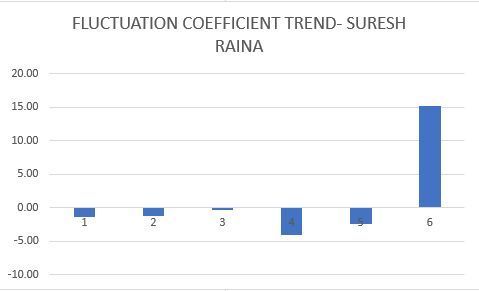
We can see from this chart that Raina's fluctuation coefficient trend is almost the polar opposite of Kohli's. His values are almost exclusively negative- a sign that if he does better this season than last season, he is more likely to put in worse performances for India, and if his IPL performance wanes, he will do well for the national side. In addition, this chart is only used until the 2015 IPL, as Raina has only played 3 ODIs for India since then (Incidentally, his IPL average has increased during that period, so it may have been a good decision not to pick him).
Raina is unlikely to be on the plane to the World Cup, but one man who will be going, and will be captaining the side is Kohli. If India are to have any chance at lifting the trophy for the third time, 'Chiku' needs to have an exceptional tournament.
He averaged 48.18 in last year's IPL, and if he is to perform well for India, he needs to improve on that average this year. So far, after 5 games, it stands at an unimpressive (by his standards) 30.4, down by almost 18. India must hope and pray that their shining light can pull it together, and lead them to glory.
Follow Sportskeeda for all the updates on IPL score 2019, purple cap, points table, schedule, news, orange cap and fantasy tips.